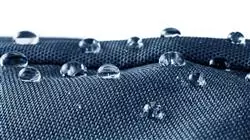University certificate
The world's largest faculty of engineering”
Introduction to the Program
This Postgraduate diploma in Technical Textiles for Hightech Applications will allow you to detect the utilities of glass fibers for the design of textile products oriented to reinforce architectural structures”+

Nowadays, textiles are used in a wide variety of professional areas, since they provide countless benefits for designing top-quality materials or instruments that enable work to be carried out with maximum safety. Along these lines, their use is crucial in the healthcare field to generate products for patient care, as well as in aeronautical construction to prevent the formation of smoke and ensure the fire resistance of seats or upholstery elements. Its high magnitude reflects the imperative need for skilled professionals in these fields, offering excellent job prospects for engineers specialized in smart textiles.
That is why TECH has opted to design this academic Postgraduate diploma, which will enable students to learn about new techniques in the use of Technical Textiles for Hightech Applications. During the 450 intensive learning hours, the professional will identify the latest uses of synthetic and ceramic fibers in the world of construction and establish the advantages offered by thermoplastics and carbon fibers in the aeronautical and aerospace sectors. Also, it will detect the modern textile structures destined to the performance of surgical interventions in the sanitary area.
All this, following a 100% online teaching method that will provide the student with an excellent learning experience without the need to make daily trips to a study center. It will also provide accessible teaching resources in innovative formats such as the explanatory video, the interactive summary or the self-assessment test. This way, the engineer will get an enjoyable learning experience, fully individualized and adapted to their academic tastes.
Combine your advanced learning with your professional and work activities through the study facilities offered by TECH”
This Postgraduate diploma in Technical Textiles for Hightech Applications contains the most complete and up-to-date program on the market. The most important features include:
- Case studies presented by experts in Textile Engineering and Textile Finishes
- The graphic, schematic, and practical contents with which they are created, provide practical information on the disciplines that are essential for professional practice
- Practical exercises where self-assessment can be used to improve learning
- Its special emphasis on innovative methodologies
- Theoretical lessons, questions to the expert, debate forums on controversial topics, and individual reflection assignments
- Content that is accessible from any fixed or portable device with an Internet connection
With this degree, delve deeper into the role of thermoplastics and carbon fibers in the aeronautical and aerospace sector to perfect your Hightech designs”
The program’s teaching staff includes professionals from sector who contribute their work experience to this educational program, as well as renowned specialists from leading societies and prestigious universities.
Its multimedia content, developed with the latest educational technology, will provide the professional with situated and contextual learning, i.e., a simulated environment that will provide an immersion education programmed to learn in real situations.
The design of this program focuses on Problem-Based Learning, by means of which the professional must try to solve the different professional practice situations that are presented throughout the academic course. For this purpose, the student will be assisted by an innovative interactive video system created by renowned experts.
Learn from anywhere in the world and at any time you want thanks to the 100% online modality of this degree"

Through this degree, you will detect the benefits offered by textiles to perform a wide range of surgical procedures"
Why study at TECH?
TECH is the world’s largest online university. With an impressive catalog of more than 14,000 university programs available in 11 languages, it is positioned as a leader in employability, with a 99% job placement rate. In addition, it relies on an enormous faculty of more than 6,000 professors of the highest international renown.

Study at the world's largest online university and guarantee your professional success. The future starts at TECH”
The world’s best online university according to FORBES
The prestigious Forbes magazine, specialized in business and finance, has highlighted TECH as “the world's best online university” This is what they have recently stated in an article in their digital edition in which they echo the success story of this institution, “thanks to the academic offer it provides, the selection of its teaching staff, and an innovative learning method aimed at educating the professionals of the future”
A revolutionary study method, a cutting-edge faculty and a practical focus: the key to TECH's success.
The most complete study plans on the university scene
TECH offers the most complete study plans on the university scene, with syllabuses that cover fundamental concepts and, at the same time, the main scientific advances in their specific scientific areas. In addition, these programs are continuously being updated to guarantee students the academic vanguard and the most in-demand professional skills. In this way, the university's qualifications provide its graduates with a significant advantage to propel their careers to success.
TECH offers the most comprehensive and intensive study plans on the current university scene.
A world-class teaching staff
TECH's teaching staff is made up of more than 6,000 professors with the highest international recognition. Professors, researchers and top executives of multinational companies, including Isaiah Covington, performance coach of the Boston Celtics; Magda Romanska, principal investigator at Harvard MetaLAB; Ignacio Wistumba, chairman of the department of translational molecular pathology at MD Anderson Cancer Center; and D.W. Pine, creative director of TIME magazine, among others.
Internationally renowned experts, specialized in different branches of Health, Technology, Communication and Business, form part of the TECH faculty.
A unique learning method
TECH is the first university to use Relearning in all its programs. It is the best online learning methodology, accredited with international teaching quality certifications, provided by prestigious educational agencies. In addition, this disruptive educational model is complemented with the “Case Method”, thereby setting up a unique online teaching strategy. Innovative teaching resources are also implemented, including detailed videos, infographics and interactive summaries.
TECH combines Relearning and the Case Method in all its university programs to guarantee excellent theoretical and practical learning, studying whenever and wherever you want.
The world's largest online university
TECH is the world’s largest online university. We are the largest educational institution, with the best and widest online educational catalog, one hundred percent online and covering the vast majority of areas of knowledge. We offer a large selection of our own degrees and accredited online undergraduate and postgraduate degrees. In total, more than 14,000 university degrees, in eleven different languages, make us the largest educational largest in the world.
TECH has the world's most extensive catalog of academic and official programs, available in more than 11 languages.
Google Premier Partner
The American technology giant has awarded TECH the Google Google Premier Partner badge. This award, which is only available to 3% of the world's companies, highlights the efficient, flexible and tailored experience that this university provides to students. The recognition as a Google Premier Partner not only accredits the maximum rigor, performance and investment in TECH's digital infrastructures, but also places this university as one of the world's leading technology companies.
Google has positioned TECH in the top 3% of the world's most important technology companies by awarding it its Google Premier Partner badge.
The official online university of the NBA
TECH is the official online university of the NBA. Thanks to our agreement with the biggest league in basketball, we offer our students exclusive university programs, as well as a wide variety of educational resources focused on the business of the league and other areas of the sports industry. Each program is made up of a uniquely designed syllabus and features exceptional guest hosts: professionals with a distinguished sports background who will offer their expertise on the most relevant topics.
TECH has been selected by the NBA, the world's top basketball league, as its official online university.
The top-rated university by its students
Students have positioned TECH as the world's top-rated university on the main review websites, with a highest rating of 4.9 out of 5, obtained from more than 1,000 reviews. These results consolidate TECH as the benchmark university institution at an international level, reflecting the excellence and positive impact of its educational model.” reflecting the excellence and positive impact of its educational model.”
TECH is the world’s top-rated university by its students.
Leaders in employability
TECH has managed to become the leading university in employability. 99% of its students obtain jobs in the academic field they have studied, within one year of completing any of the university's programs. A similar number achieve immediate career enhancement. All this thanks to a study methodology that bases its effectiveness on the acquisition of practical skills, which are absolutely necessary for professional development.
99% of TECH graduates find a job within a year of completing their studies.
Postgraduate Diploma in Technical Textiles for Hightech Applications:
Technical textiles are a key player in the high-tech industry, as they are used in a wide range of applications, from automotive to medical to construction. To excel in this sector, it is essential to have professionals trained in the design and production of technical textiles. For this reason, TECH Global University has designed the Postgraduate Diploma in Technical Textiles for Hightech Applications.
The Postgraduate Diploma in Technical Textiles for Hightech Applications.
An innovative program
The Postgraduate Diploma in Technical Textiles for Hightech Applications is an innovative program that aims to train professionals in the design and production of technical textiles for high-tech applications. During the program, participants will acquire knowledge in areas such as research and development of new materials, technical product design, production and quality control.
The program is designed to train professionals in the design and production of technical textiles for high-tech applications.
In addition, the postgraduate program has a practical methodology that allows participants to apply the knowledge acquired in real projects, allowing them to develop skills and competencies that will be useful in their professional career.
A specialized teaching team
The program has a specialized teaching team, made up of professionals with extensive experience in technical textile production and university teaching. These teachers are committed to the training of the participants and provide them with personalized accompaniment and constant feedback to ensure that they can achieve their goals and develop their full potential.
"







